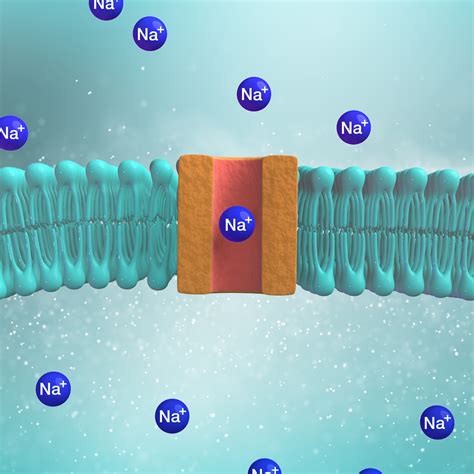sodium chanel cycle | sodium channel deactivated sodium chanel cycle Figure 2 - The complete structure of an activated open sodium channel $30.88
0 · what is the sodium channel
1 · voltage gathered sodium channel
2 · sodium channels in cells
3 · sodium channels function
4 · sodium channel selectivity
5 · sodium channel deactivated
6 · how does sodium channel work
7 · closed state of sodium channel
Get the best deals on 1980s OverSized Sweaters for Women when you shop the largest online selection at eBay.com. Free shipping on many items | Browse your favorite .
Here we present the 2.45 Å resolution crystal structure of the complete NavMs prokaryotic sodium channel in a fully open conformation.Full Size Image - The complete structure of an activated open sodium channel
Full Size Table - The complete structure of an activated open sodium channel
Figure 2 - The complete structure of an activated open sodium channelSodium channels are integral membrane proteins that form ion channels, conducting sodium ions (Na ) through a cell's membrane. They belong to the superfamily of cation channels. Voltage-gated sodium channels (VGSCs) are present in many tissue types within the human body including both cardiac and neuronal .
As described in the previous chapter the sodium and potassium channels can cycle between three different states; closed, open and inactivated. These states predominate at different .
Here we present the 2.45 Å resolution crystal structure of the complete NavMs prokaryotic sodium channel in a fully open conformation.
Sodium channels are integral membrane proteins that form ion channels, conducting sodium ions (Na +) through a cell's membrane. [1][2] They belong to the superfamily of cation channels. Classification. They are classified into 2 types: Function. Voltage-gated sodium channels (VGSCs) are present in many tissue types within the human body including both cardiac and neuronal tissues. Like other channels, VGSCs activate, deactivate, and inactivate in response to changes in membrane potential.
As described in the previous chapter the sodium and potassium channels can cycle between three different states; closed, open and inactivated. These states predominate at different stages of the action potential (Figure 2). Voltage-gated sodium (NaV) channels mediate a plethora of electrical activities. NaV channels govern cellular excitability in response to depolarizing stimuli. Voltage-gated sodium channels (VGSCs), formed by 24 transmembrane segments arranged into four domains, have a key role in the initiation and propagation of electrical signaling in excitable cells. Here we describe the complete cycle of conformational changes that a bacterial sodium channel undergoes as it transitions from resting to activated/open and inactivated/closed states, based.
what is the sodium channel
The nine subtypes of mammalian voltage-gated sodium (Na v) channels, Na v 1.1 to Na v 1.9, are responsible for the initiation and propagation of action potentials in specific excitable systems, among which Na v 1.4 functions in skeletal muscle.
voltage gathered sodium channel
The high-resolution structure of the cardiac sodium channel gives detailed insights into voltage-dependent activation, ion selectivity, arrhythmia mechanisms, and antiarrhythmic drug action at the atomic level. Abstract. Voltage-gated sodium (Na V) channels initiate and propagate action potentials in excitable tissues to mediate key physiological processes including heart contraction and nervous system function. Accordingly, Na V channels are major targets for drugs, toxins and disease-causing mutations. Here we present the 2.45 Å resolution crystal structure of the complete NavMs prokaryotic sodium channel in a fully open conformation.Sodium channels are integral membrane proteins that form ion channels, conducting sodium ions (Na +) through a cell's membrane. [1][2] They belong to the superfamily of cation channels. Classification. They are classified into 2 types: Function.
Voltage-gated sodium channels (VGSCs) are present in many tissue types within the human body including both cardiac and neuronal tissues. Like other channels, VGSCs activate, deactivate, and inactivate in response to changes in membrane potential.
As described in the previous chapter the sodium and potassium channels can cycle between three different states; closed, open and inactivated. These states predominate at different stages of the action potential (Figure 2). Voltage-gated sodium (NaV) channels mediate a plethora of electrical activities. NaV channels govern cellular excitability in response to depolarizing stimuli.
Voltage-gated sodium channels (VGSCs), formed by 24 transmembrane segments arranged into four domains, have a key role in the initiation and propagation of electrical signaling in excitable cells.
Here we describe the complete cycle of conformational changes that a bacterial sodium channel undergoes as it transitions from resting to activated/open and inactivated/closed states, based. The nine subtypes of mammalian voltage-gated sodium (Na v) channels, Na v 1.1 to Na v 1.9, are responsible for the initiation and propagation of action potentials in specific excitable systems, among which Na v 1.4 functions in skeletal muscle.The high-resolution structure of the cardiac sodium channel gives detailed insights into voltage-dependent activation, ion selectivity, arrhythmia mechanisms, and antiarrhythmic drug action at the atomic level.
hermes fahrrad

hermes cape cod ladies watch
sodium channels in cells
The historical returns of a 60/40 portfolio have been impressive, with an average annual return of around 8% over the past century. Even during periods of market volatility and economic downturns, the 60/40 portfolio has remained resilient. Moreover, subsequent returns have been promising as well.
sodium chanel cycle|sodium channel deactivated



























